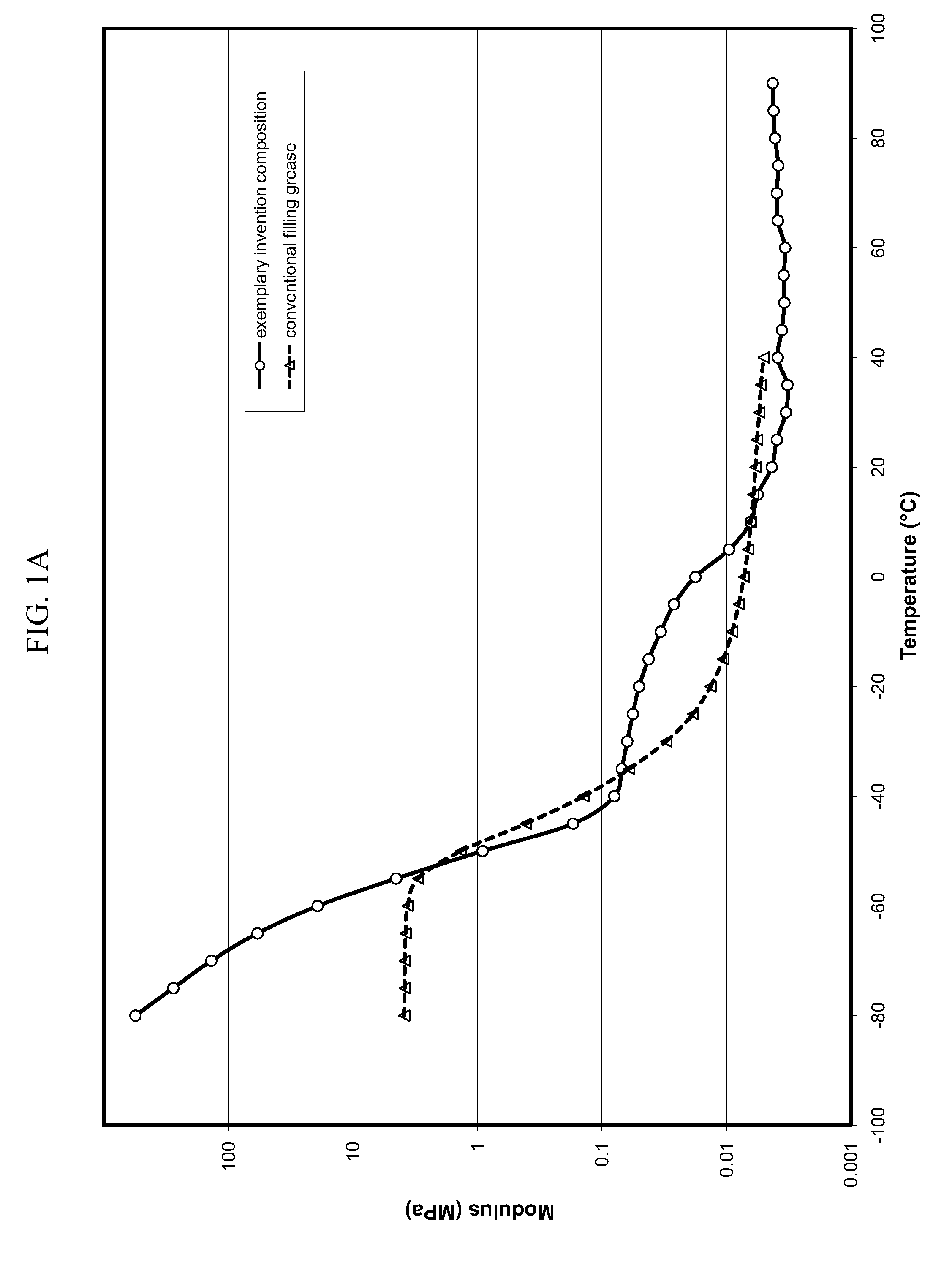Coupling Composition for Optical Fiber Cables
- Summary
- Abstract
- Description
- Claims
- Application Information
AI Technical Summary
Benefits of technology
Problems solved by technology
Method used
Image
Examples
working example
[0068]Styrene-ethylene / butylene-styrene block copolymers possessing a number-average molecular weight of about 200,000 g / mol or higher, commercially available under the trade name KRATON G-1651, were slowly blended into a highly branched isoparrafinic polyalphaolefin oil that was pre-heated to about 290° F. The polymer / oil blend ratio was about 6.5:93.5. The polyalphaolefin oil, commercially available from Chevron Phillips under the trade name SYNFLUID PAO 7, had a viscosity of about 7 centistokes at 100° C. The mixture was blended for 30-60 minutes, and then the resultant coupling composition was poured under pressure into barrels. Thereafter, the coupling composition was melted and pumped through a die and thereby integrated into an optical fiber cable.
[0069]The styrene-ethylene / butylene-styrene block copolymers and the polyalphaolefin oil can be (and perhaps should be) mixed at higher temperatures (e.g., 300-350° F. or more) to facilitate improved blending. This, however, require...
PUM
 Login to View More
Login to View More Abstract
Description
Claims
Application Information
 Login to View More
Login to View More - R&D
- Intellectual Property
- Life Sciences
- Materials
- Tech Scout
- Unparalleled Data Quality
- Higher Quality Content
- 60% Fewer Hallucinations
Browse by: Latest US Patents, China's latest patents, Technical Efficacy Thesaurus, Application Domain, Technology Topic, Popular Technical Reports.
© 2025 PatSnap. All rights reserved.Legal|Privacy policy|Modern Slavery Act Transparency Statement|Sitemap|About US| Contact US: help@patsnap.com



